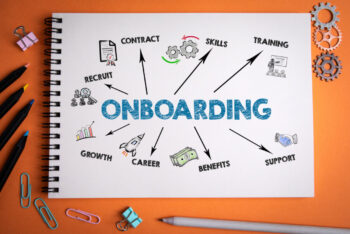New Staffer Onboarding Checklist: Pre-Start Preparations
A well-structured onboarding process sets the stage for a new hire’s success and contributes to their long-term engagement with your team. This checklist is designed to help you cover all the essentials of onboarding a new staff member, ensuring their first days, weeks, and month are productive and welcoming. By following this guide, you’ll create an experience that fosters confidence, clarity, and connection from day one.
Pre-Start Preparations:
Workspace Setup:
- Assign and prepare a desk or workstation for the new staffer.
- Set up a computer, phone, and any necessary equipment.
- Ensure access to required software and company systems.
Account Creation:
- Create an email account and login credentials for company systems.
- Set up any required accounts for internal tools or platforms.
Welcome Packet:
- Assemble a welcome packet including the employee handbook, organizational chart, and any necessary forms (e.g., direct deposit, benefits).
- Prepare a list of key contacts and their roles.
First Day Schedule:
- Plan the new staffer’s first day schedule, including meetings, training, and a tour.
- Arrange for a welcome lunch or team introduction session.
Day 1:
Arrival and Welcome:
- Greet the new staffer upon arrival.
- Provide an overview of the day’s schedule.
- Introduce the new staffer to immediate team members and key contacts.
Workstation Orientation:
- Assist the new staffer in logging into their computer and email.
- Review phone setup and voicemail instructions.
- Ensure they have access to necessary software and databases.
Office Tour:
- Show key locations (e.g., restrooms, break room, supply room, emergency exits).
- Introduce the layout of the office, including meeting rooms and communal areas.
Paperwork and HR Meeting:
- Complete any remaining HR paperwork (e.g., tax forms, direct deposit).
- Review company policies, benefits, and emergency procedures.
Initial Training:
- Provide an overview of the company’s core systems and tools.
- Begin any immediate job-specific training.
Week 1:
Role Orientation:
- Meet with the new staffer to discuss their role, responsibilities, and expectations.
- Introduce them to relevant workflows and procedures.
- Provide access to any necessary documentation or manuals.
Team Introductions:
- Arrange meetings with key team members and other departments they’ll work with.
- Encourage participation in team meetings or projects to understand office dynamics.
Continued Training:
- Schedule additional training sessions for software, tools, or specific tasks.
- Provide opportunities for hands-on practice with guidance.
Check-In:
- Hold a quick check-in at the end of the week to address any questions or concerns.
- Provide feedback and offer support.
Weeks 2–4:
Integration into Daily Tasks:
- Gradually assign regular tasks and responsibilities to the new staffer.
- Monitor progress and offer assistance as needed.
- Encourage the new staffer to start contributing to team projects or initiatives.
Ongoing Support:
- Set up regular check-ins to discuss progress, challenges, and goals.
- Provide feedback and recognition for early achievements.
- Ensure continued access to resources and support as needed.
Team Integration:
- Encourage participation in social or team-building activities.
- Facilitate opportunities for the new staffer to collaborate with colleagues.
- Address any integration issues and support relationship-building efforts.
End of First Month:
Performance Review:
- Conduct a formal check-in to review the first month’s performance.
- Discuss strengths, areas for improvement, and set goals for the next period.
Feedback Session:
- Invite the new staffer to share their experience, feedback, and any suggestions.
- Adjust onboarding or training plans based on feedback.
Plan for Ongoing Development:
- Identify any additional training or development needs.
- Set clear objectives and timelines for the new staffer’s continued growth.
By following this checklist, you’ll ensure new hires feel supported, empowered, and fully integrated into your team. With thoughtful preparation and ongoing guidance, you’ll set the stage for their success and contribute to a thriving office culture.
